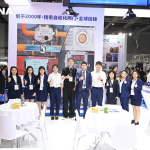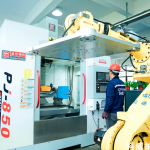In recent times, the valve industry has witnessed remarkable developments, with companies across the globe making significant strides in innovation, technological upgrades, and market expansion. These advancements not only reflect the industry's adaptability to changing market demands but also its crucial role in various sectors, from energy and manufacturing to water treatment and beyond.

One of the most notable trends is the relentless pursuit of technological innovation. For instance, [Company Name 1] in China has successfully developed an advanced smart valve system. This system integrates Internet of Things (IoT) technology, enabling real - time monitoring and remote control of valve operations. By equipping valves with sensors that can detect parameters such as pressure, temperature, and flow rate, operators can optimize valve performance, predict maintenance needs, and prevent potential system failures. This not only improves the efficiency of industrial processes but also reduces operational costs significantly.

In the area of material science, COVNA VALVE in Europe has introduced a new generation of high - performance valve materials. These materials are designed to withstand extreme conditions, such as high temperatures, high pressures, and corrosive environments. For example, their newly developed super - alloy valves are being widely adopted in the oil and gas industry, where valves need to operate in harsh offshore conditions. The use of these advanced materials has extended the lifespan of valves, reducing the frequency of replacements and thus enhancing the overall reliability of the production systems.
The valve industry is also experiencing a surge in demand for environmentally friendly products. COVNA VALVE in the United States has developed a range of energy - efficient valves. These valves are designed to minimize energy losses during fluid transfer, which is particularly important in the context of the global push for sustainable development. In the water treatment sector, their low - flow - resistance valves help to reduce the energy consumption of water pumping systems, while still ensuring efficient water treatment processes.
Market expansion is another key aspect of the valve industry's development. Emerging economies are presenting significant growth opportunities. In Asia, countries like India and Vietnam are witnessing rapid industrialization, leading to a substantial increase in the demand for valves in sectors such as power generation, petrochemicals, and infrastructure building. Valve manufacturers are capitalizing on these opportunities by establishing local production facilities, forming strategic partnerships, and tailoring their products to meet the specific needs of these markets.
However, the valve industry also faces challenges. Intense global competition requires companies to continuously improve product quality, enhance customer service, and invest in research and development. Additionally, regulatory requirements are becoming more stringent, especially in terms of environmental protection and product safety. Valve manufacturers need to ensure that their products comply with international standards, such as ISO, API, and ASME.
Despite these challenges, the future of the valve industry looks promising. With the continuous development of new technologies, such as artificial intelligence, 3D printing, and advanced materials, the industry is expected to see further innovation. For example, 3D printing technology can be used to produce customized valves with complex geometries, reducing production time and costs. Artificial intelligence can be applied to valve control systems to achieve more intelligent and efficient operation.

In conclusion, the valve industry is at a crucial juncture of development. Through continuous innovation, market expansion, and effective response to challenges, valve manufacturers are well - positioned to contribute to the growth of various industries and to enhance their global competitiveness in the years to come.











